No New Artists (What about Les Levine?)
Heimir Bjorgulfsson, Kevin van Braak, Carlos Bunga, J Lindfors, Anne Mie van KerckhovenThe Irish artist Les Levine is generally viewed as the originator of media art. His interests include the impact of so-called new technologies on social relationships and our viewing habits

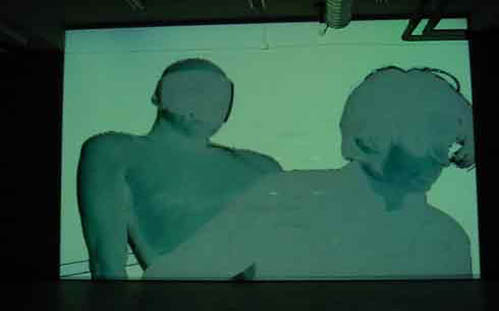
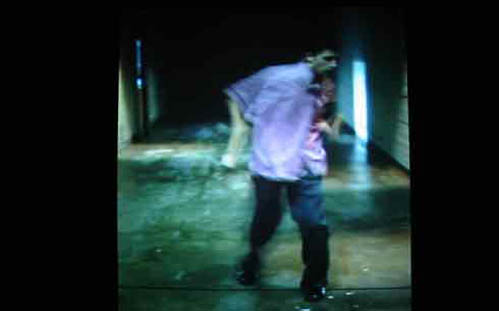
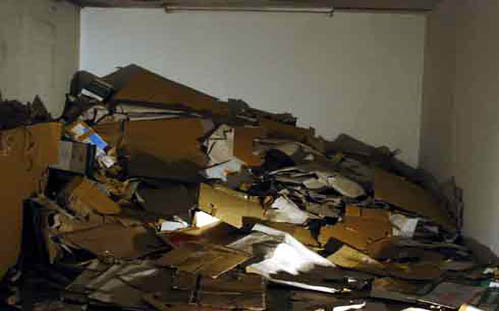
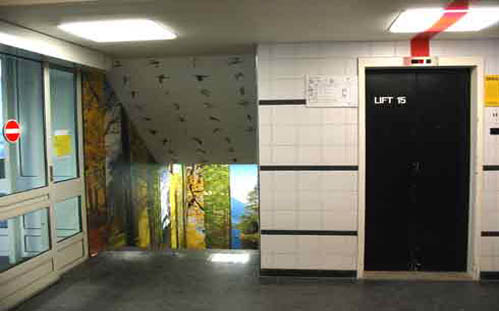

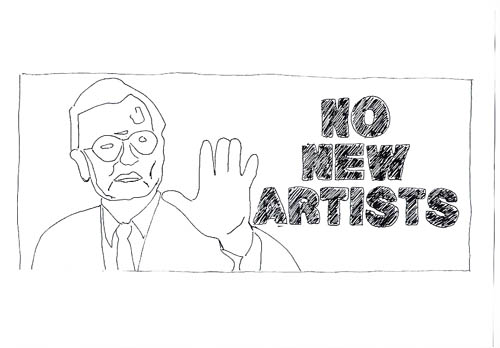
At the same time the artist regularly draws a bead on the art world’s conventions and value system. He is best-known for his posters and billboards. One of the text image that earned particular notoriety is 1991’s blue and red poster ‘No New Artists’, which shows George Bush senior making a fending-off gesture, with the text ‘No New Artists’ in prominent view.
W139’s opening show at the new Post CS location takes its title from this specific work by Levine. This is an indirect reference to the history of the artist’s initiative, which for a long time appeared to serve as an ‘annex’ of Amsterdam’s Rietveld Academy. In recent years, the institute’s programme has not only become more international, it has also shifted its focus from the presentation of work by ‘debutants’ to that of artists who have already developed a sizeable and consistent oeuvre, and who consider exhibiting in W139 a new challenge.
The title ‘No New Artists’ refers in irony to the ‘quest for virgins’ that a great many curators seem to be involved in. Many exhibition makers are continuously seeking out ‘fresh blood’, proudly presenting ‘new talent’. In its first exhibition in Post CS, W139 strives to counterbalance this phenomenon by presenting a new work by Anne-Mie Van Kerckhoven - a seasoned veteran who nonetheless continuously explores and enlarges the boundaries of her own work. She is the central figure of the exhibition, surrounded by the ‘young guard’, the so-called ‘new artists’ in both a literal and a figurative sense.
For this occasion, Anne-Mie Van Kerckhoven, who was already a guest of W139 in 1989, will be collaborating with the multi-talented Mauro Pawlowski. For a long time Van Kerckhoven was seen as an underground figure in the Belgian art scene. In 1981, together with her partner and fellow artist Danny Devos, Van Kerckhoven founded the association Club Moral, which served as a framework within which they could present rough, extreme and radical expressions. The activities of Club Moral – concerts, theatre performances and exhibitions – had close ties with the punk movement, the provocative sub-culture that came to the fore in the mid-’70s. In the ’90s,
Van Kerckhoven switched to what is known as multi-media art. Like Levine, she pioneered the deployment of certain new media techniques in art. Even before the general popularisation of the Internet, Van Kerckhoven strived to make her pieces work interactively at different levels, employing both computer animation and digital image processing technology. She combined these efforts with the production of videos and work in more ‘traditional’ media like painting (on plexiglass or aluminium) and drawing.
Nowadays, Van Kerckhoven is a broadly esteemed and respected artist, with recent shows in the Zeno X Gallery in Antwerp, the Barbara Thumm Gallery in Berlin and the Neue Aachener Kunstverein. Nonetheless, the artist submits her own practice to continuous re-examination, approaching it critically and with the intent to uncover new content for her own work. In the current exhibition, Jaclin Lindfors forms the young counterpart to Van Kerckhoven.
Lindfors, a native of Sweden, recently graduated from the Rietveld Academy. At the graduation exhibition, Lindfors made a lasting impression with a total installation that included wooden sculpture and video work. In this installation, the artist investigated certain ‘archetypes’, addressing among other things the question ‘whether there is a difference between a murderer and a person who has committed a murder’. Lindfors combines autobiographical and symbolic elements (the wooden animals of the savannah refer to various survival strategies) with a documentary approach (her interview with an inmate of the Malmö prison).
Similar to Van Kerckhoven, Lindfors shows a marked interest in moral questions and stereotypical representation, and like Van Kerckhoven she employs a variety of widely divergent media. For the exhibition, Lindfors will be realizing a new work, which investigates various new methods of presentation.
In the ‘transitional zones’ - the entrance to the exhibition spaces and the former shooting range - the artists Heimir Bjorgulfsson and Kevin van Braak will be realizing new site-specific installations. Van Braak en Björgúlfsson share an interest in the oppositions ‘fake’ vs. ‘natural’ and ‘artificial’ vs. ‘organic’. Their in situ pieces for W139 focus on the notion of artificiality. In his visual work, Bjorgulfsson often refers to the unspoilt and awe-inspiring landscape of his native Iceland. The artist is intrigued by the remarkable contrast between its wild and ‘primeval’ areas of natural beauty and the completely over-organized and man-made landscapes of his new homeland the Netherlands. He takes this antithesis as the starting point for a total installation in the entrance hall of the W139 basement.
Kevin van Braak elaborates his preoccupation with the contrast between illusory and real in a different fashion. In his media installation in the former shooting range of the Post CS building, Van Braak collaborates with choreographers Pieter de Ruiter and Eva Villanueva to examine how the movement of a dancing body can be experienced in relation to the passing of video images.
The Portuguese artist Carlos Bunga constructs temporary, fragile living areas that connect the geometric precision of modernist architecture with the untidy aesthetics and visual cacophony of urban slums. Bunga, who originally studied painting at the Lisbon Academy, is interested in the ‘performativity’ of sculpture. The artist views the cardboard structures that he erects as part of a larger process. The large-scale cardboard ‘living unit’ that the artist recently constructed for the spa of San Sebastian (built by Rafael Moneo) was destroyed by the artist himself prior to the opening. The public was confronted with the remains of this building/sculpture.
Up until this point, Bunga has mainly worked in white cubes. Therefore the basement spaces of W139 - with their unfinished surfaces and industrial atmosphere - form a special challenge for the artist. In the two months preceding this exhibition, Bunga has been working in this underground area. At the time of the opening, the results of this work will no longer be physically present. Instead, the relics of his working process and his study of the structure of the Post CS building will be presented to the public.